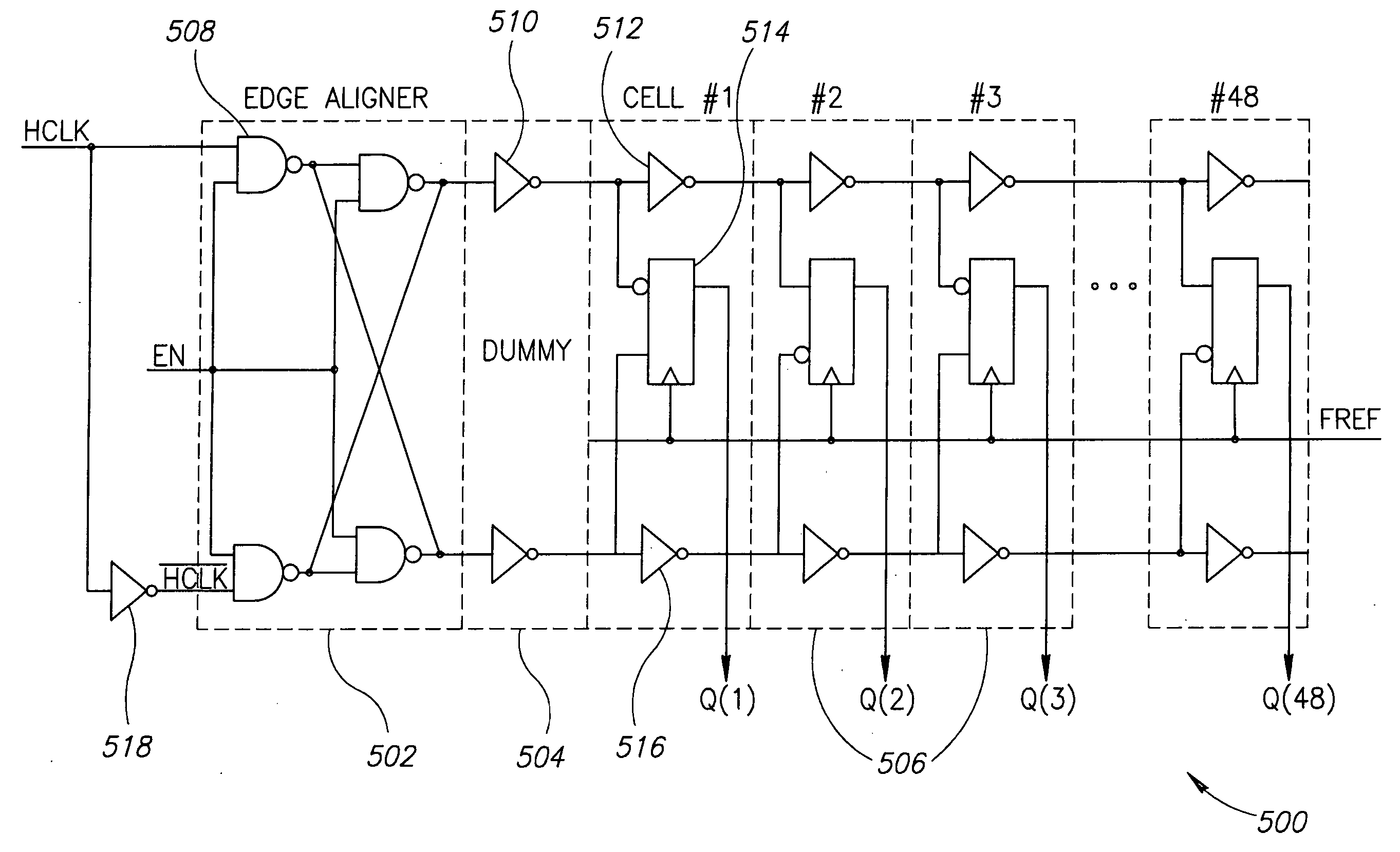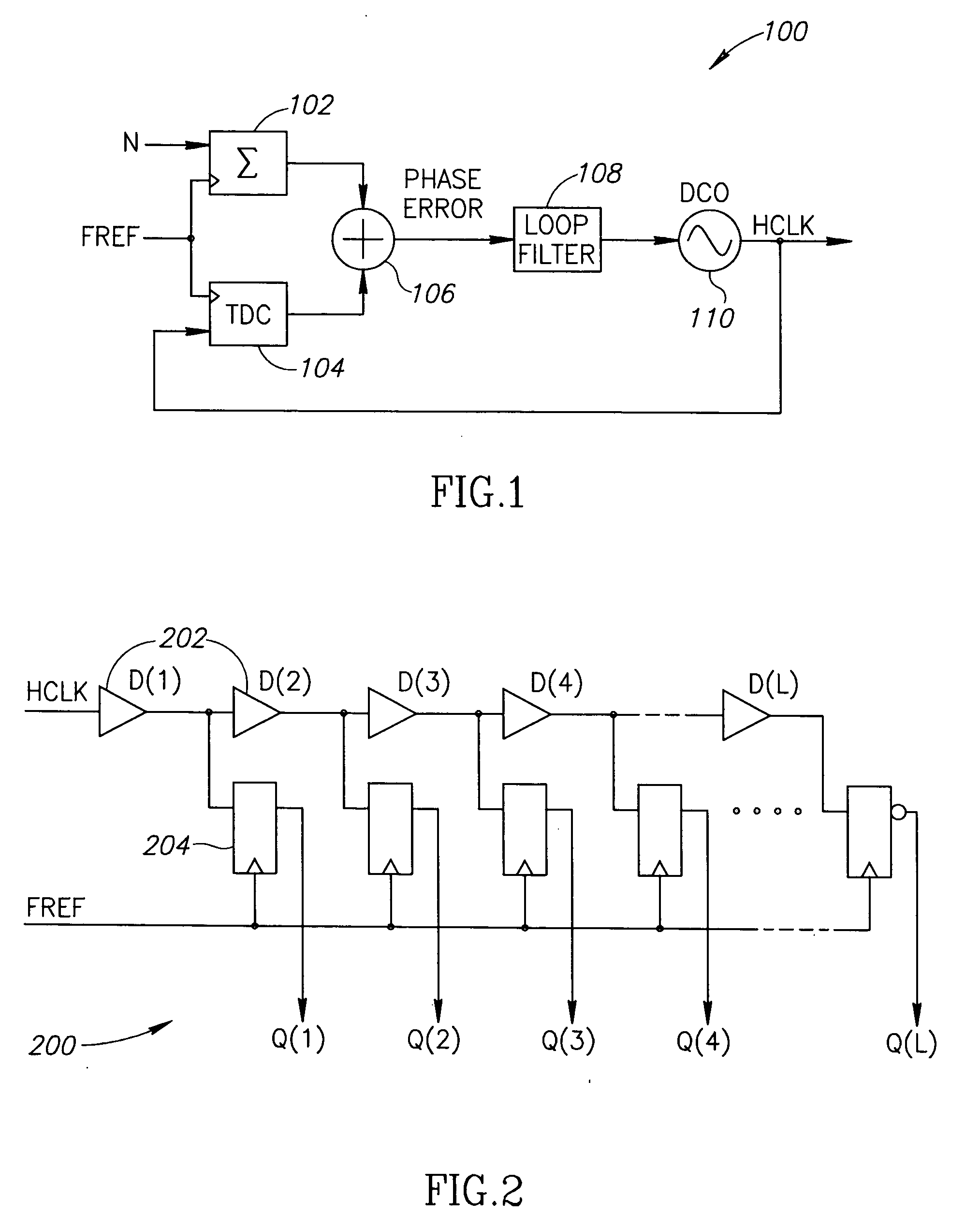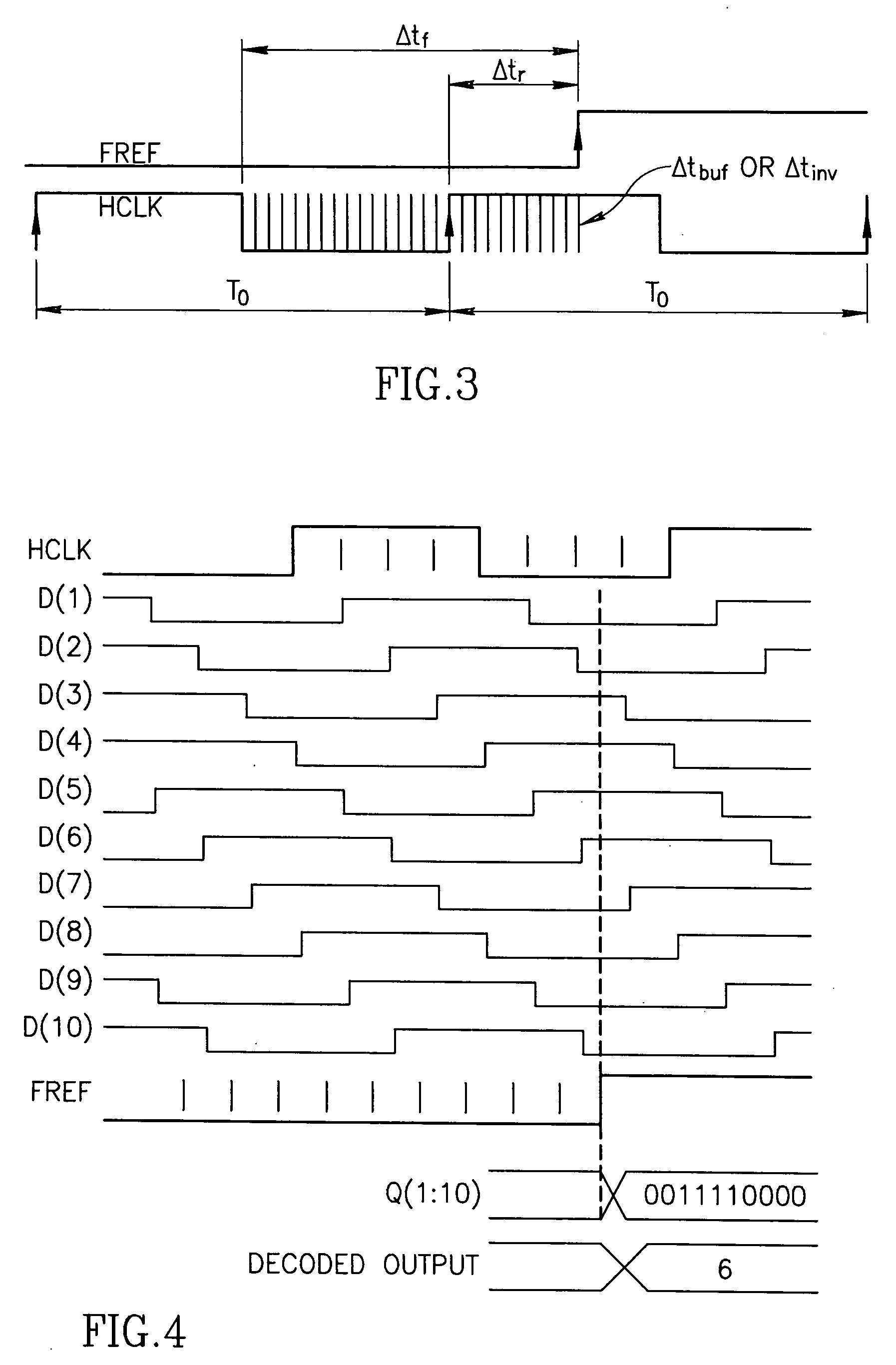Circuit for high-resolution phase detection in a digital RF processor
a phase detection and phase detection technology, applied in the field of data communication, can solve the problems of less than ideal, limited buffer delay in the minimum time resolution of these prior art designs, and the above approaches, so as to reduce power consumption and be less sensitive
- Summary
- Abstract
- Description
- Claims
- Application Information
AI Technical Summary
Benefits of technology
Problems solved by technology
Method used
Image
Examples
Embodiment Construction
Notation Used Throughout
[0038] The following notation is used throughout this document.
TermDefinitionADCAnalog to Digital ConverterADPLLAll Digital Phase Locked LoopASICApplication Specific Integrated CircuitCMOSComplementary Metal Oxide SemiconductorDBBDigital BasebandDCODigitally Controlled OscillatorDCXODigitally Controlled Crystal OscillatorDLLDelay Locked LoopDNLDifferential NonlinearityDPADigital Power AmplifierDRPDigital RF Processor or Digital Radio ProcessorDSPDigital Signal ProcessorEDGEEnhanced Data rates for Global EvolutionFOMFigure-of-MeritFPGAField Programmable Gate ArrayFREFFrequency ReferenceGSMGlobal System for Mobile CommunicationHDLHardware Description LanguageICIntegrated CircuitINLIntegral NonlinearityLANLocal Area NetworkLDOLow DropoutLSBLeast Significant BitMOSMetal Oxide SemiconductorNMOSn-channel Metal Oxide SemiconductorPLLPhase Locked LoopPMPower ManagementPMOSp-channel Metal Oxide SemiconductorPVTProcess Voltage TemperatureRFRadio FrequencyRFBISTRF Bu...
PUM
 Login to View More
Login to View More Abstract
Description
Claims
Application Information
 Login to View More
Login to View More - R&D
- Intellectual Property
- Life Sciences
- Materials
- Tech Scout
- Unparalleled Data Quality
- Higher Quality Content
- 60% Fewer Hallucinations
Browse by: Latest US Patents, China's latest patents, Technical Efficacy Thesaurus, Application Domain, Technology Topic, Popular Technical Reports.
© 2025 PatSnap. All rights reserved.Legal|Privacy policy|Modern Slavery Act Transparency Statement|Sitemap|About US| Contact US: help@patsnap.com



